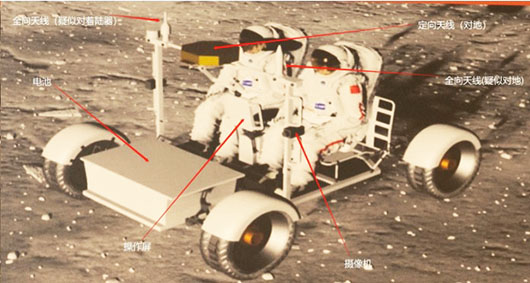Special to CosmicTribune.com, August 8, 2023
By Richard Fisher
The United States plans its manned return to the Moon, in 2025 or 2026, to be followed by China’s astronauts in 2029.
One key to their respective abilities to build lunar facilities as the basis for dominating choice strategic locations on the Moon will be mobility.

The U.S. has long understood that astronauts in bulky space suits cannot be expected to perform the lifting and constructions required on the Moon and has long been developing concepts for large enclosed/pressurized manned Moon rovers and unmanned rovers.
For the U.S. Apollo 15, 16 and 17 lunar missions the U.S. employed the 460 lb/210 kg Lunar Roving Vehicle (LRV), a two-seat, electric powered open “car” that had a range of 57 miles/92 kilometers.
Very likely since the early 2000s, China has also been developing a series of manned and unmanned Moon rovers.
During a February 2023 Beijing exhibition that revealed the first model of a Chinese Moon Lander, observers quickly noticed that attached to the outside of the lander was a folded four-wheel vehicle.
Subsequently released computer graphic images revealed that China’s two-astronaut open buggy-style Moon rover that will resemble the U.S. LRV.
It will weigh about 200kg and have a range of 10km according to Zhang Hailian, deputy chief designer at the China Manned Space Agency (CMSA), speaking at the China Commercial Aerospace Forum in the Chinese city of Wuhan on July 12.
For early Chinese Moon landings, with missions that may only last about 10 hours, this lightweight Moon Rover will greatly assist preliminary exploration and assessments of Moon sites that will be candidates for larger Chinese manned Moon bases.
On April 11, 2023 the South China Morning Post described the smaller 40kg Cubic Emergency Lunar Vehicle (CELV) that would fold on the back of the lightweight rover.
Full Text . . . . Current Edition . . . . Subscription Information

You must be logged in to post a comment Login